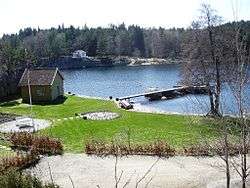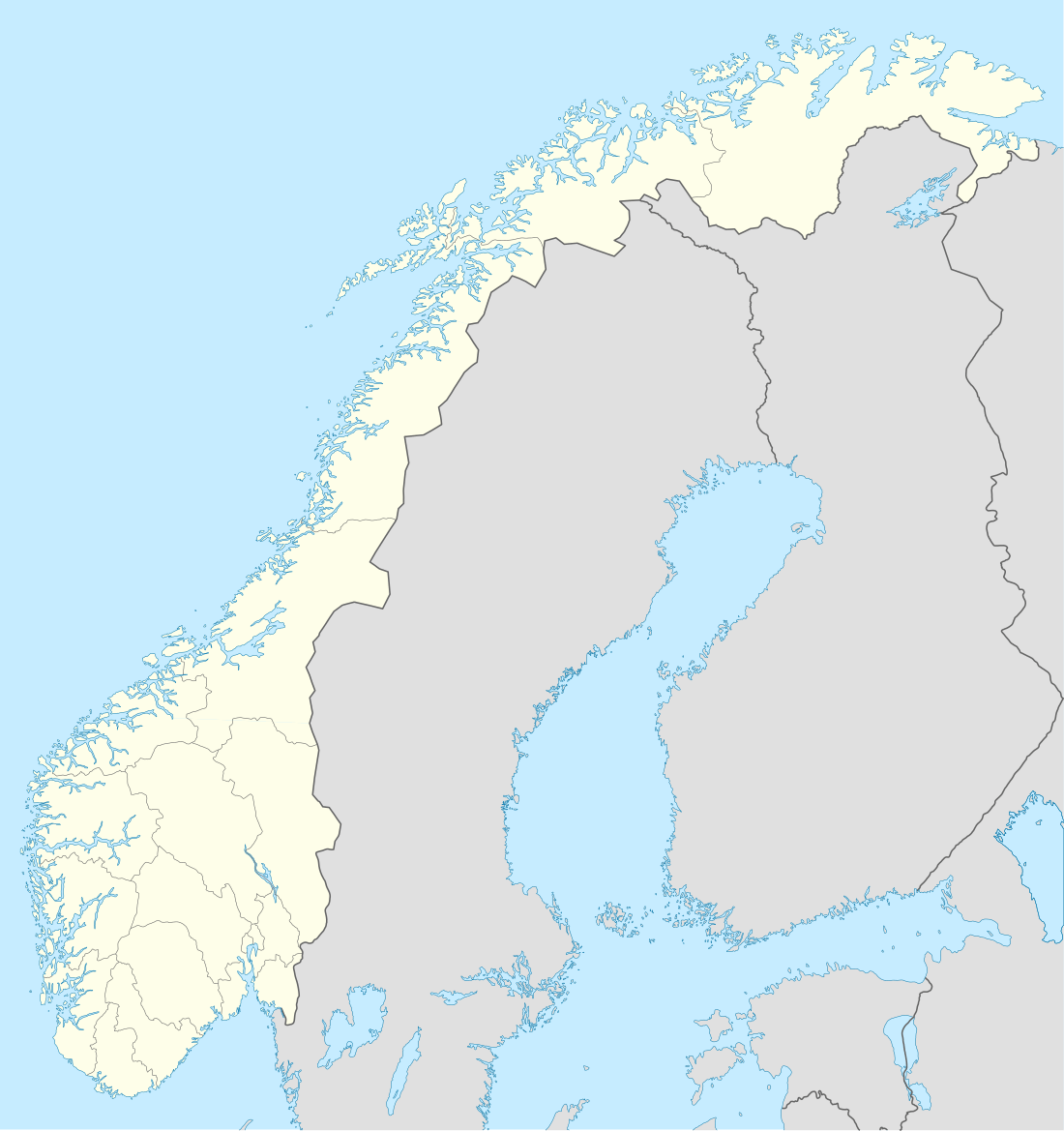Høvåg
Høvåg (historically: Høvaag) is a former municipality in Aust-Agder county, Norway. The 77 km2 (30 sq mi) municipality existed from 1865 until its dissolution in 1962. It was located in the southern part of the present-day municipality of Lillesand. The administrative centre of the municipality was the village of Høvåg where the Høvåg Church is located. Old coastal settlements in Høvåg include Ulvøysund, Gamle Hellesund, Skottevik, Kjøbmannsvig and Åkerøyhamn. The village of Høvåg is located midway between the towns of Lillesand and Kristiansand.[1]
Høvåg kommune | |
|---|---|
 View of coastal Høvåg | |
 Høvåg kommune Location of the municipality  Høvåg kommune Høvåg kommune (Norway) | |
| Coordinates: 58°10′11″N 08°14′50″E | |
| Country | Norway |
| Region | Southern Norway |
| County | Aust-Agder |
| Municipality ID | NO-0927 |
| Adm. Center | Høvåg |
| Area | |
| • Total | 77 km2 (30 sq mi) |
| Time zone | UTC+01:00 (CET) |
| • Summer (DST) | UTC+02:00 (CEST) |
| Created from | Vestre Moland in 1865 |
| Merged into | Lillesand in 1962 |
Name
The municipality (originally the parish) is named after the old Høvaag farm (Old Norse: Høyvágar). The first element is høy which means "hay" and the last element is vágr which means "bay".[2]
History
The municipality of Høvaag was created in 1865 when the municipality of Vestre Moland was split into two separate municipalities: Høvåg (population: 2,069) in the south and Vestre Moland (population: 2,167) in the north. On 1 January 1962, the municipality of Høvåg (population: 1,330) was merged with the neighboring municipality of Vestre Moland (population: 2,454), the ladested of Lillesand (population: 1,041), and the Gitmark farm area of Eide (population: 22). Together, these areas formed a new, larger Lillesand municipality.[3]
Høvåg Church
Høvåg Church (Høvåg kirke) is located in Høvåg parish in Vest-Nedenes deanery. It is constructed of brick and was built ca. 1100 - 1150. The church uses a cruciform floor plan and has 400 seats. Nave is shaped like a T with the altar in the center. In 1723, the congregation started a project to expand, maintain and refurbish the church. The west wing was joined in 1768, the north wing, which is the current main entrance was built in 1828. The tower came in 1831. [4]
The altarpiece is a triptych representing faith, hope and love. It is from about 1620 and was completed by an unknown artist. The pulpit is from about 1660. Around 1900 the altarpiece was painted white, but in 1935 it was restored to the present form. The pictures on the pulpit is of the four evangelists.[5]
Notable residents
- Karl Johan Fjermeros, local politician
References
- Thorsnæs, Geir, ed. (2015-07-23). "Høvåg – tidligere kommune i Aust-Agder". Store norske leksikon (in Norwegian). Kunnskapsforlaget. Retrieved 2017-09-02.
- Rygh, Oluf (1905). Norske gaardnavne: Nedenes amt (in Norwegian) (8 ed.). Kristiania, Norge: W. C. Fabritius & sønners bogtrikkeri. p. 155.
- Jukvam, Dag (1999). "Historisk oversikt over endringer i kommune- og fylkesinndelingen" (PDF) (in Norwegian). Statistisk sentralbyrå. Cite journal requires
|journal=(help) - "Høvåg kirke". Store norske leksikon. Retrieved October 1, 2016.
- "Høvåg kirke". Den norske kirke. Retrieved October 1, 2016.
External links
